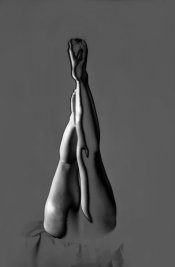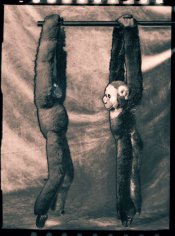masimix
Member
Is it possible?
I'm teaching phototechnique in an art school, and there is a project on surrealism coming up. Solarization is one of the topics we are going through. I remember doing solarizations when I was a student myself, but can't remember much more than turning on the lights at some point when the paper was in the developer.
I have been reading a little bit here ((there was a url link here which no longer exists)) and there (http://unblinkingeye.com/Articles/Solarization/solarization.html), and found out (among several things) that solarization of large-format negatives (by exposing them to light during developing) can be one thing. Anyway, I would like to show them solarization of prints, but it seems like developer/paper combo is important.
Can Ilford RC-paper and Ilford MG-developer be used succesfully? (It's what we use at the school now). We have EFKE 25 ISO 4x5" film, so maybe that is a good one to try for film?
Any tip and experiences you have would be great, thanks!
Marius
I'm teaching phototechnique in an art school, and there is a project on surrealism coming up. Solarization is one of the topics we are going through. I remember doing solarizations when I was a student myself, but can't remember much more than turning on the lights at some point when the paper was in the developer.
I have been reading a little bit here ((there was a url link here which no longer exists)) and there (http://unblinkingeye.com/Articles/Solarization/solarization.html), and found out (among several things) that solarization of large-format negatives (by exposing them to light during developing) can be one thing. Anyway, I would like to show them solarization of prints, but it seems like developer/paper combo is important.
Can Ilford RC-paper and Ilford MG-developer be used succesfully? (It's what we use at the school now). We have EFKE 25 ISO 4x5" film, so maybe that is a good one to try for film?
Any tip and experiences you have would be great, thanks!
Marius

















